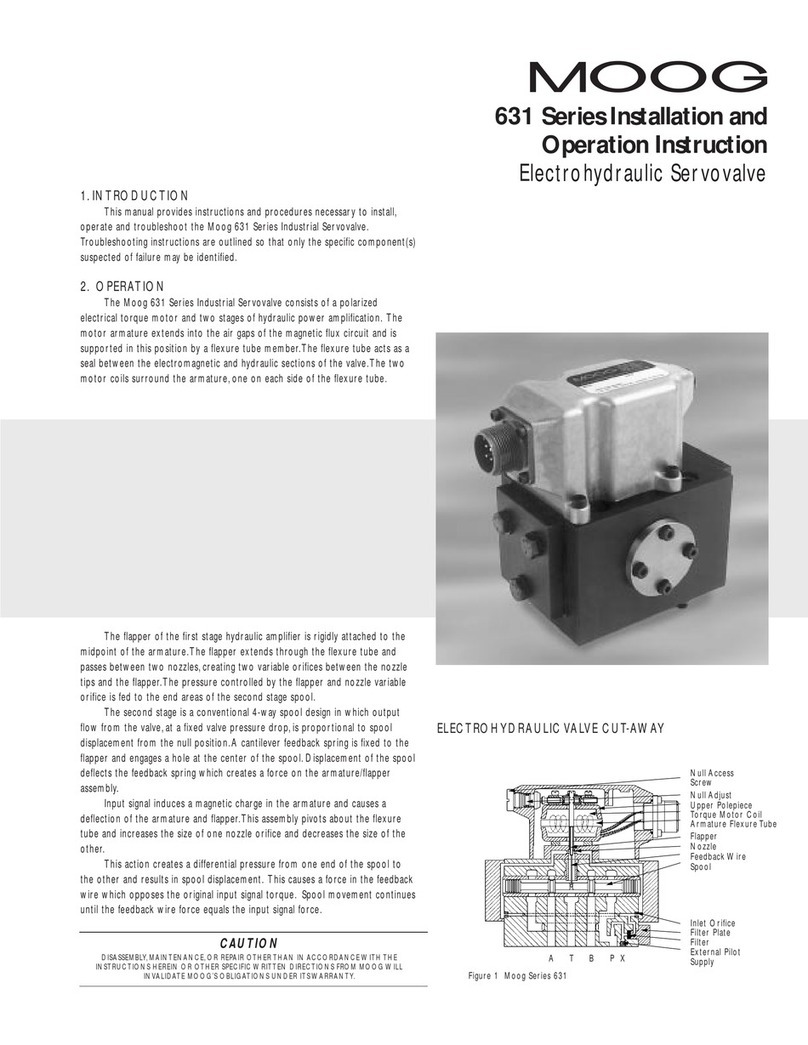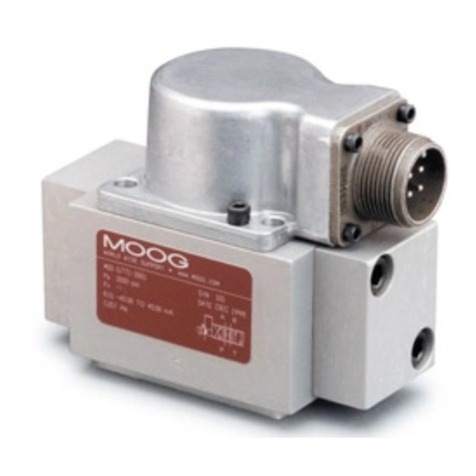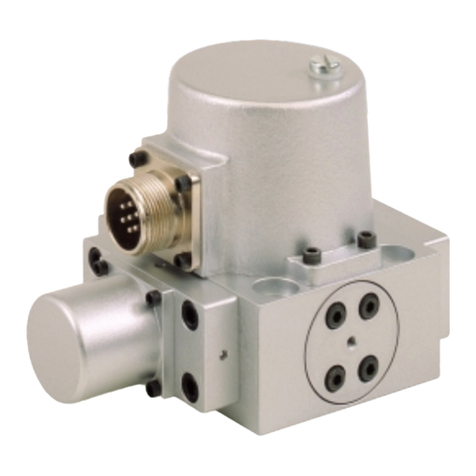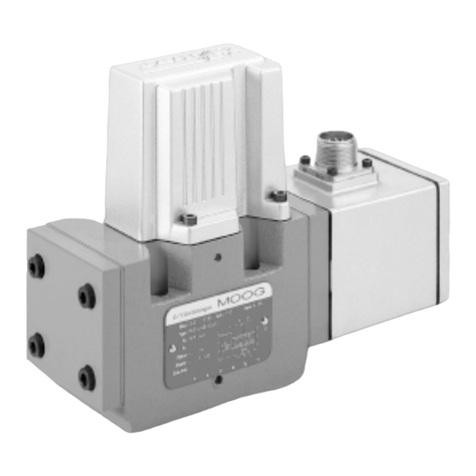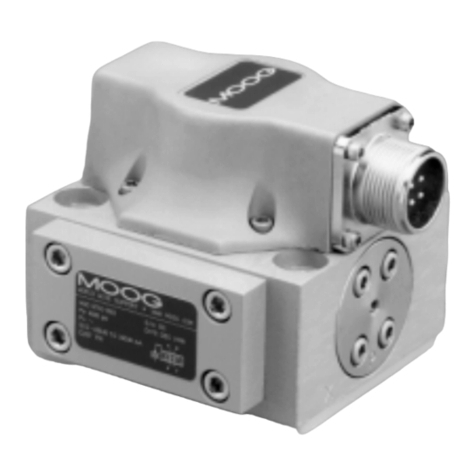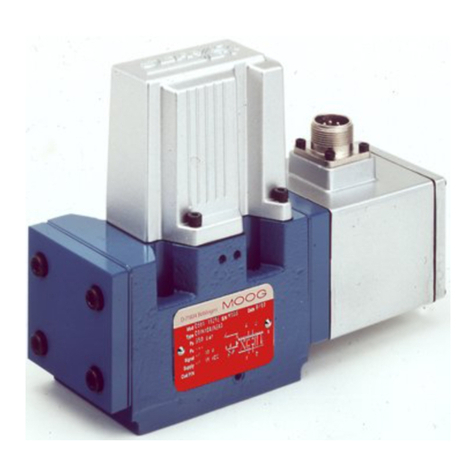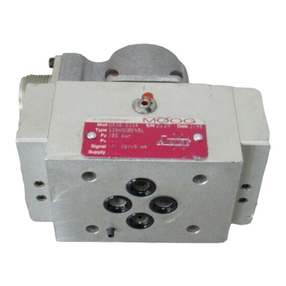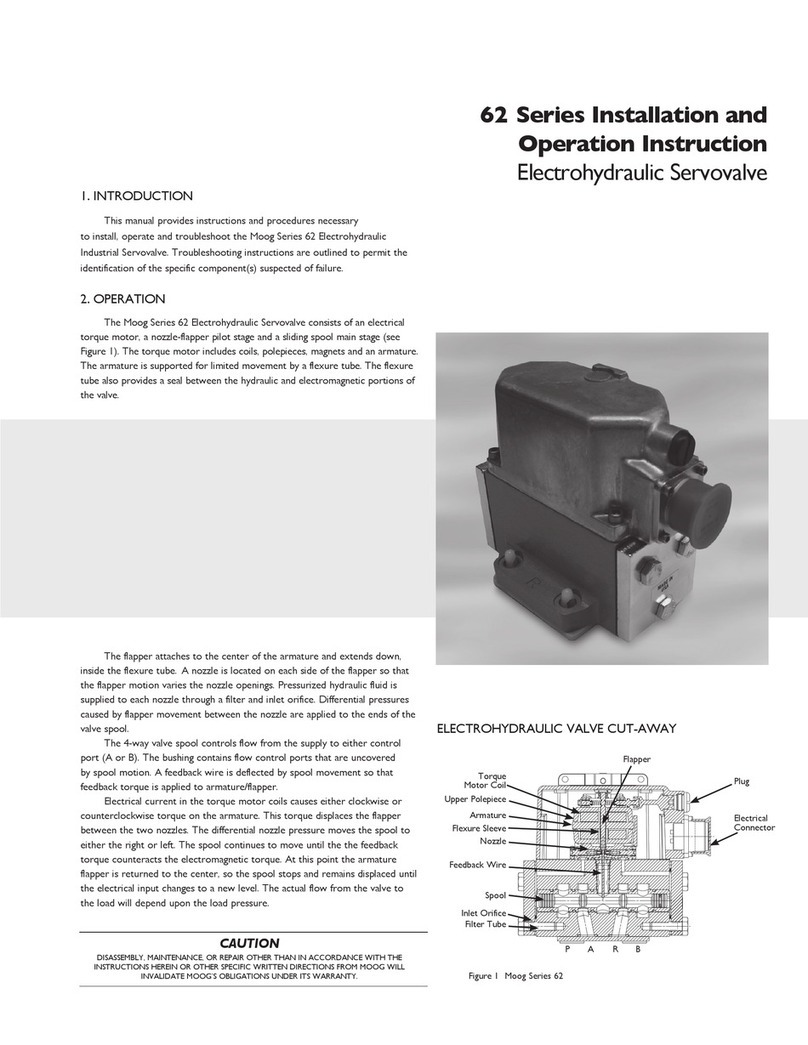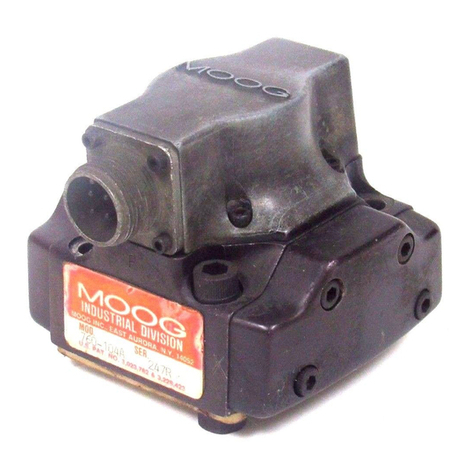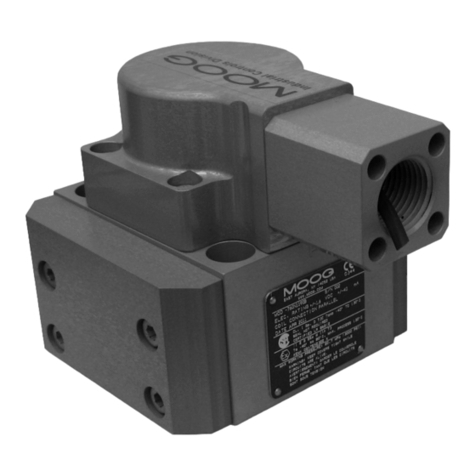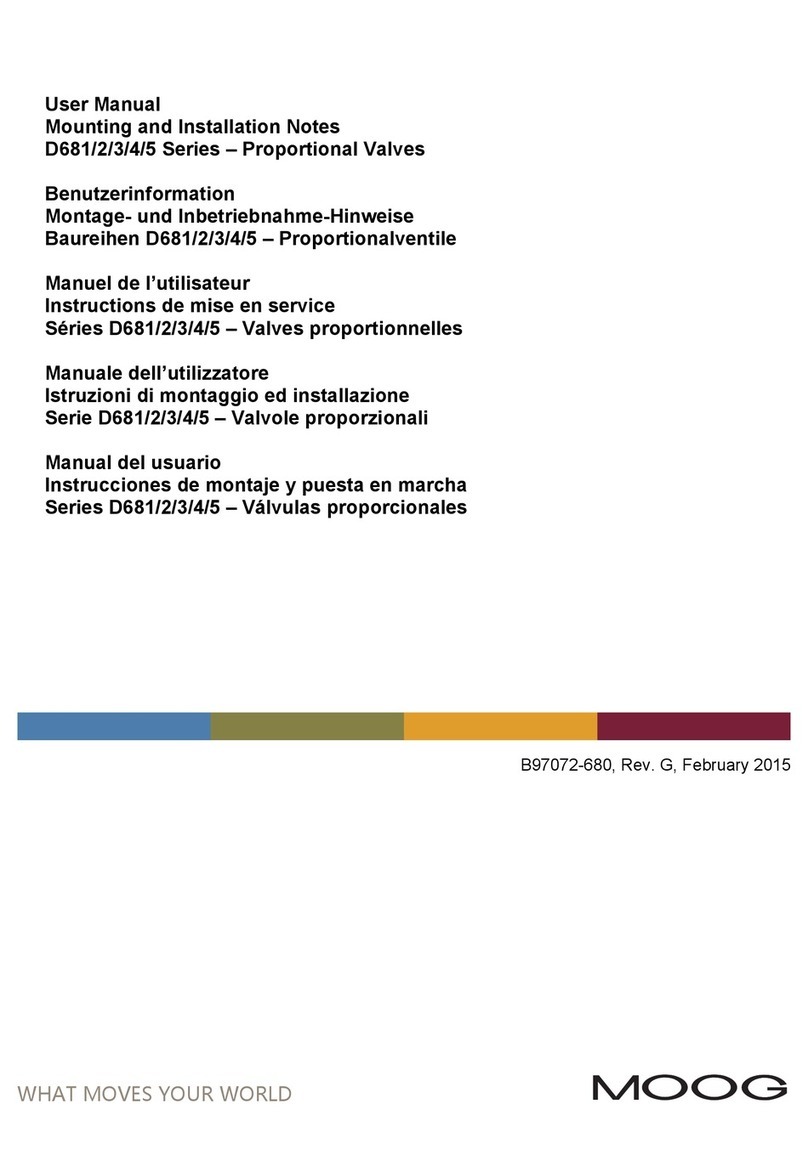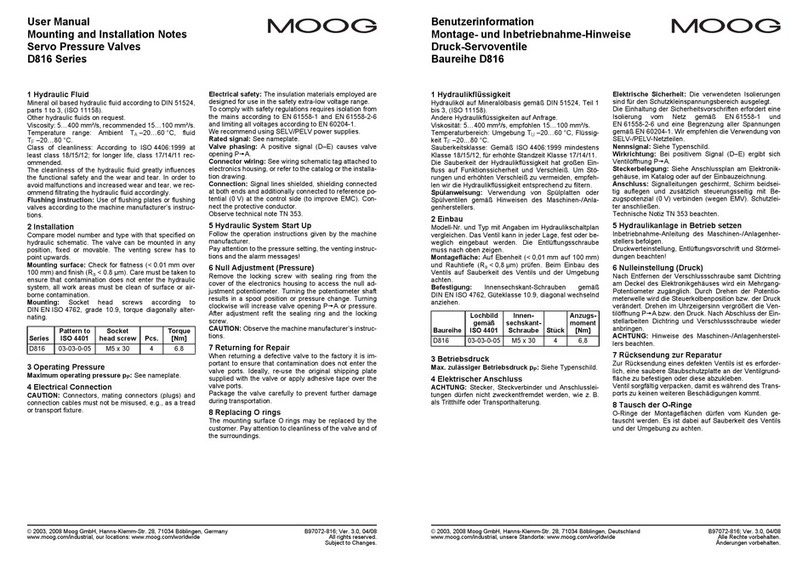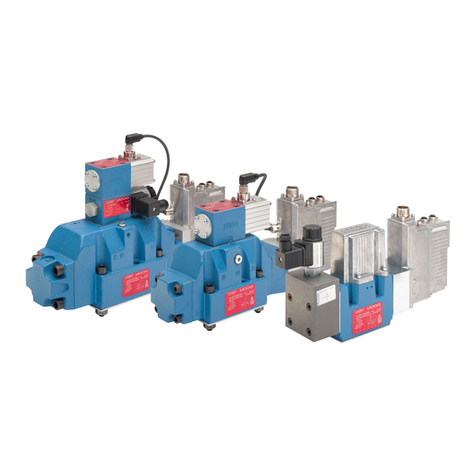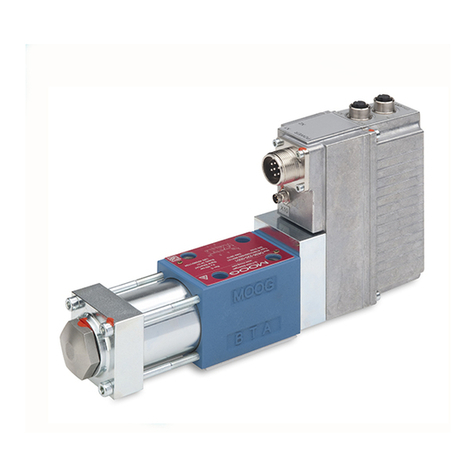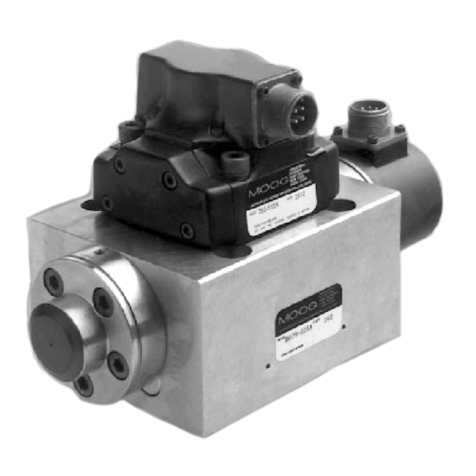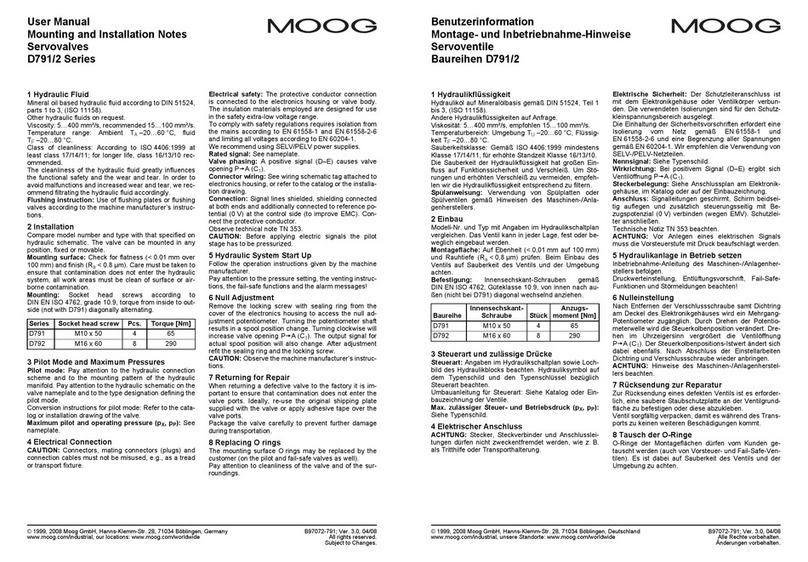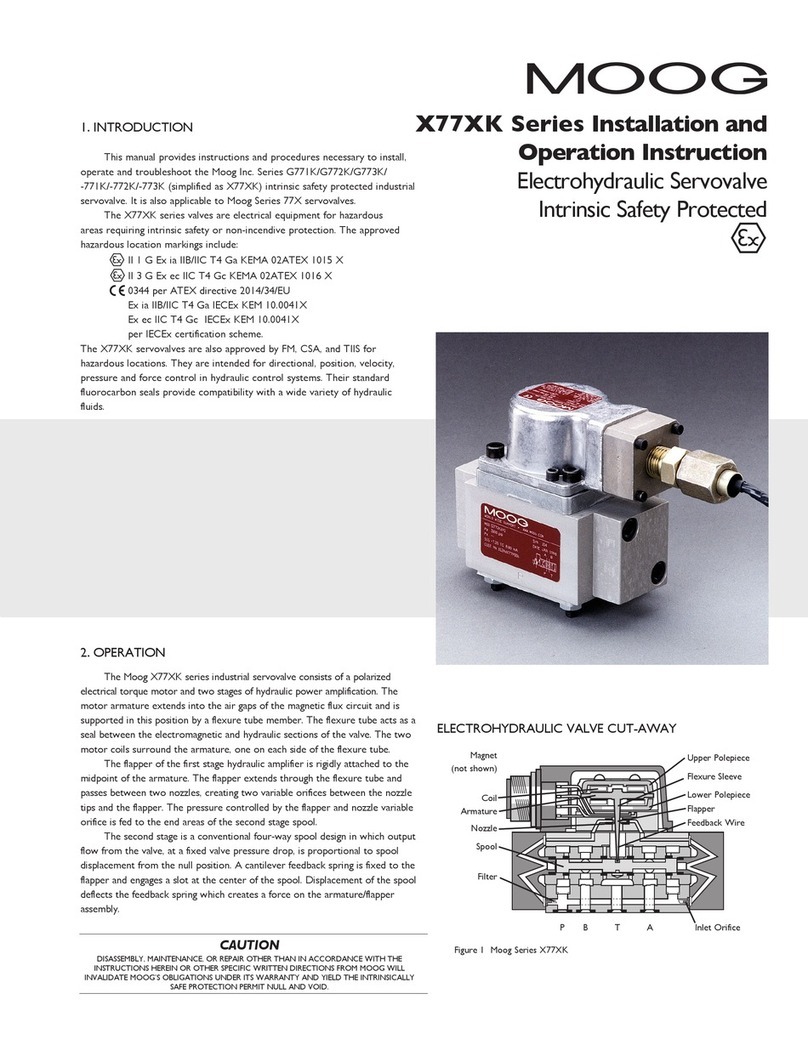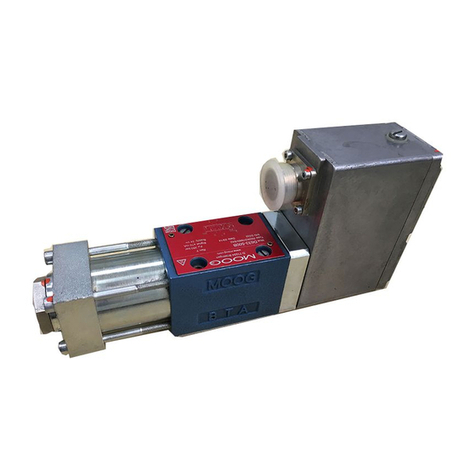
Potential Trouble
Servovalve does not follow input command
signal. (Actuator or components are
stationary or creeping slowly.)
Poor response. (Servovalve output lags
electrical command signal).
Output flow obtained from one control
port only. (Actuator is hardover, or
hydraulic motor is rapidly rotating. No
response to electrical command signal.)
Low flow gain. (Failure to meet high rate or
rapid traverse speeds.)
High threshold. (Jerky, possible oscillatory
or “hunting” motion in closed loop system.)
High Null Bias. (High input current required
to maintain hydraulic cylinder or motor
stationary.)
Probable Cause
1. Open coil assembly or open coil leads.
2. Plugged inlet filter element.
Partially plugged filter element.
1. Plugged inlet orifices.
2. Plugged inlet filter element.
3. Plugged hydraulic amplifier assembly.
4. Jammed spool.
Shorted coil assembly.
“Sticky” spool
1. Incorrect null adjustment
2. Partially plugged inlet orifice assembly.
3. Partially plugged filter element.
4. Partially plugged nozzle.
Remedy
1. Return to factory.
2. Replace filter element.
Replace filter element and check for dirty
hydraulic fluid in system.
1. Return to factory.
2. Replace filter element.
3. Return to factory.
4. Return to factory.
Return to factory.
Clean bushing and spool assembly.
1. Readjust null
2. Return to factory.
3. Replace filter element and check for dirty
hydraulic fluid in system.
4. Return to factory.
8.TROUBLESHOOTING CHART
The following troubleshooting chart list potential troubles encountered, probable causes, and remedies.
9. FIELD REPLACEABLE FILTER ASSEMBLY REPLACEMENT
a. Remove four socket head cap screws and lockwashers on filter cover
using a 5/32 inch Allen wrench. Remove filter cover plate. Use 1/4 inch-28
screw to pull filter plug out.
b. Remove O-Rings from filter plug and filter.
c. Inspect filter for foreign material and discard.
d. Install O-Rings on filter plug and inside filter.
e. Install filter, filter plug and cover plate.Torque screw to 85 inch-pounds.
10. PILOT STAGE FILTER REPLACEMENT
a. Remove torque motor cover leaving all electrical connections in place.
b. Locate Pilot Stage Filter in Nozzle Block of torque motor assembly.
Remove screws, lockwashers and cover plates from both sides.
c. Remove filter plugs from both sides of nozzle block and one (1) inlet orifice
assembly using a 2-56 screw which threads into the filter plug and inlet
orifice assembly. Use the 2-56 screw in the remaining inlet orifice assembly
to help remove filter tube. Note:These inlet orifice assemblies seat in
nozzle block and cannot go through bore during removal.
d. Remove O-rings from filter plugs and O-rings from inlet orifice assemblies.
e. Visually inspect filter orifice assemblies for damage or foreign matter.
f. Discard old O-rings and old filter tube.
g. Install new O-rings on filter plugs, and new O-rings on inlet orifices.
h. Install new filter tube back into torque motor nozzle block with one (1)
inlet orifice assembly inserted into filter tube. Follow with filter plug. Install
the other inlet orifice assembly and filter plug into the other end of filter
tube. Note: Inlet orifice assemblies and filter plugs are interchangeable.
i. Reinstall both cover plates with screws and lockwashers.Torque to 10+/-1
inch-pounds.
11. FUNCTIONAL CHECKOUT AND CENTERING
a. Install servovalve on hydraulic system or test fixture, but do not connect
electrical lead.
b. Apply required system pressure to servovalve and visually examine for
evidence of external leakage. If leakage is present and cannot be rectified
by replacing O-Rings, remove the discrepant component and return for
repair or replacement.
Note: If the system components are drifting or hardover, adjust
the mechanical null of the servovalve.
c. Connect electrical lead to servovalve and check phasing in accordance
with system requirements.
12.AUTHORIZED REPAIR FACILITIES
Moog does not authorize any facilities other than Moog or Moog
subsidiaries to repair its servovalves. It is recommended you contact Moog at
(716) 652-2000 or visit www.moog.com/worldwide to locate your closest Moog
repair facility. Repair by an independent (unauthorized) repair house will result
in voiding the Moog warranty and could lead to performance degradation or
safety problems.
Figure 4
Filter Tube
Inlet Orifice
Assembly
Filter Plug
Field
Replaceable
Filter
Filter Housing
O-Rings
Table 1. Replacement Parts
Part Description Qty. Part Number
72 Series Filter Replacement Kit 1 B52555RK099K001
Base O-Rings 4 -42082-040
Filter Housing O-Rings (I) 2 -42082-039
External Pilot Supply and Field
Replaceable Filter Internal O-Ring (I) 1 -42082-013
Filter Plug O-Rings (I) 2 -42082-060
Inlet Orifice O-Rings (I) 2 -42082-059
Pilot Stage Filter Tube (I) 1 -23020
Field Replaceable Filter (I) 1 -22050
Motor Cap Gasket (1) 1 -24509
(I) Included in Filter Replacement Kit.
Moog • 72 Series Operation Instruction • RevE 04/07 3
Pilot Stage Filter
(in Nozzle Block)
Torque Motor
Assembly
(cover not shown)
